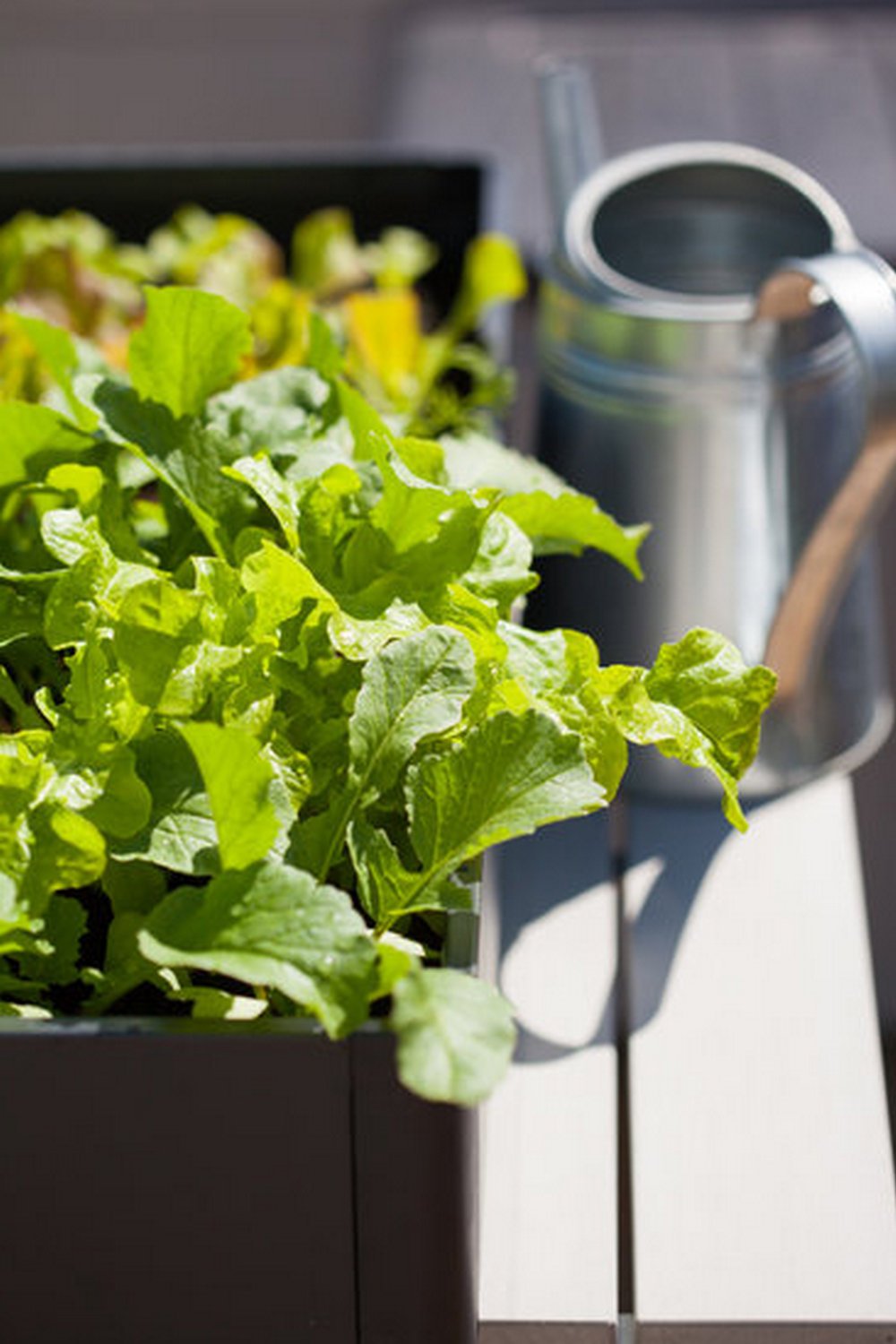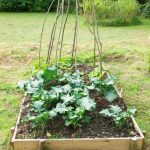Are you interested in maximizing your vegetable gardening yield? Whether you’re a beginner or have some experience, knowing the right techniques for setting up the perfect vegetable garden is crucial. From choosing the right vegetables to understanding soil preparation and harvesting, this article will guide you through every step of the process to ensure that you achieve the maximum yield from your garden.
Starting with a beginner’s guide, we will walk you through the process of setting up your own vegetable garden. Then, we will delve into selecting the right vegetables for optimal yield and understanding the soil preparation and fertilization techniques necessary for healthy growth. Additionally, we will discuss planting and spacing methods, as well as the importance of proper watering and pest control to maintain a thriving garden.
For those looking to extend their growing season and maximize their vegetable gardening yield, we’ll provide tips and techniques to help you achieve long-term success. With a focus on sustainable practices, this article aims to equip gardeners with everything they need to know in order to reap bountiful harvests from their own vegetable gardens.
Choosing the Right Vegetables for Maximum Yield
When it comes to vegetable gardening, one of the key factors in achieving a successful yield is choosing the right vegetables to cultivate. By selecting the appropriate vegetables for your specific growing conditions and climate, you can maximize your harvest and enjoy a bountiful supply of fresh produce. Here are some tips for choosing the right vegetables for maximum yield:
- Consider your local climate and growing season: Before selecting vegetables for your garden, take into account the climate and growing season in your area. Some vegetables thrive in cooler temperatures, while others require warmer weather to flourish.
- Assess your available space: Take stock of the space you have available for gardening, whether it’s a small backyard plot or containers on a balcony. Choose vegetables that will fit within your space constraints and still allow room for proper growth and development.
- Factor in your level of experience: If you’re new to vegetable gardening, consider starting with relatively easy-to-grow vegetables that are more forgiving of common mistakes. As you gain confidence and experience, you can gradually introduce more challenging crops.
Incorporating a mixture of different vegetables with varying maturity times can also help ensure a continuous harvest throughout the growing season. By diversifying your selection, you can maximize both the quantity and variety of produce from your garden.
Remember that successful vegetable gardening yields not only depend on choosing the right vegetables but also on proper care and maintenance throughout the growing season. With careful planning and attention to detail, you can set yourself up for a bountiful harvest of fresh, homegrown produce.
Understanding Soil Preparation and Fertilization Techniques
When it comes to maximizing your vegetable gardening yield, understanding soil preparation and fertilization techniques is crucial. The first step in this process is to test the soil in your garden to determine its pH level and nutrient content. This will help you identify any deficiencies that need to be addressed before planting your vegetables. Adding organic matter such as compost or well-rotted manure can improve the structure and fertility of the soil, providing essential nutrients for plant growth.
Fertilization Techniques
Once you have prepared the soil, it’s important to determine the right fertilizer for your vegetables. Different plants have different nutrient requirements, so it’s important to choose a fertilizer that meets those specific needs. Some vegetables may require more nitrogen for leafy growth, while others may need more phosphorus and potassium for fruit production. Understanding these requirements will help you select the right fertilizer and apply it at the appropriate times during the growing season.
Organic vs. Synthetic Fertilizers
Another consideration when it comes to fertilization techniques is whether to use organic or synthetic fertilizers. Organic fertilizers are derived from natural sources such as compost, bone meal, or fish emulsion, and provide slow-release nutrients to the soil.
On the other hand, synthetic fertilizers are manufactured and provide a quick release of nutrients. Both options have their advantages and disadvantages, so it’s important to weigh these factors when deciding which type of fertilizer to use in your vegetable garden.
By understanding soil preparation and fertilization techniques, you can create an optimal growing environment for your vegetables and ultimately maximize your vegetable gardening yield. Taking the time to prepare the soil and provide the necessary nutrients will set the stage for healthy plant growth and abundant harvests throughout the growing season.
Planting and Spacing for Optimal Growth
Choosing the Right Planting Location
When it comes to planting your vegetable garden, choosing the right location is crucial for ensuring optimal growth and yield. Look for a spot in your garden that receives plenty of sunlight, as most vegetables require at least 6-8 hours of direct sunlight each day. Additionally, make sure the area has good drainage to prevent waterlogged soil, which can lead to root rot and other issues.
Proper Spacing Between Plants
Once you’ve selected your planting location, it’s important to consider the spacing between your vegetable plants. Crowding can lead to competition for water and nutrients, stunting the growth of your plants and reducing their yield. Be sure to follow recommended spacing guidelines for each type of vegetable you are planting to ensure that they have enough room to thrive.
Utilizing Companion Planting
Another method for maximizing vegetable gardening yield is utilizing companion planting techniques. Certain plants complement each other when grown in close proximity, providing natural pest control or mutual beneficial relationships in terms of nutrient uptake and growth. Research companion planting strategies and consider incorporating them into your garden plan to optimize space and promote healthy plant growth.
By carefully considering these factors when it comes to planting and spacing in your vegetable garden, you can set yourself up for success in terms of achieving a bountiful harvest. Keep in mind that proper placement and organization will help prevent common gardening issues while also promoting the health and vitality of your plants.
The Importance of Watering and Pest Control
Watering and pest control are two crucial aspects of vegetable gardening that can greatly impact the yield of your crops. Proper watering ensures that your vegetables receive the necessary moisture for healthy growth, while effective pest control helps to protect your plants from potential damage and loss.
When it comes to watering your vegetable garden, it’s important to strike a balance. Overwatering can lead to root rot and other issues, while underwatering can result in stunted growth and poor yield. The specific water needs of your vegetables will vary, so it’s essential to research the requirements of each plant in your garden. Additionally, investing in a drip irrigation system or soaker hoses can help ensure that your vegetables receive consistent and efficient watering.
Pest control is another key factor in maximizing your vegetable gardening yield. Common pests such as aphids, caterpillars, and beetles can wreak havoc on your crops if left unchecked.
Implementing organic pest control methods, such as introducing beneficial insects or using natural repellents, can help protect your vegetables without harmful chemicals. Regularly inspecting your plants for signs of pest infestation and taking proactive measures to address any issues can make a significant impact on the overall health and productivity of your garden.
| Vegetable | Weekly Watering Requirements (Inches) |
|---|---|
| Tomatoes | 1-2 |
| Lettuce | 1-1.5 |
| Zucchini | 1-1.5 |
Monitoring and Maintaining Vegetable Health and Growth
Once you have planted your vegetables and they have started to grow, it is important to monitor and maintain their health and growth to ensure a successful vegetable gardening yield. Here are some key tips for keeping your plants healthy and thriving:
1. Check for signs of pests and diseases regularly: Inspect your plants for any signs of pests or diseases such as holes in the leaves, discoloration, or wilting. Introduce natural predators like ladybugs or use organic pesticides to control pest infestations.
2. Provide adequate support for vine crops: If you are growing vine crops such as tomatoes, cucumbers, or peas, make sure to provide them with proper support to keep the fruits off the ground. This will help prevent rotting and keep the plants healthy.
3. Keep an eye on water and nutrient levels: Monitor the soil moisture regularly and water your plants accordingly. In addition, make sure to fertilize your vegetables as needed to ensure they have all the nutrients necessary for optimal growth.
By staying vigilant and taking proactive measures against potential issues, you can help maintain the health of your vegetable garden and ultimately increase your vegetable gardening yield.
Remember that successful vegetable gardening involves ongoing care and attention to ensure a bountiful harvest. By staying on top of monitoring and maintaining your vegetable garden’s health and growth, you can set yourself up for a great yield at harvest time.
Harvesting and Storing Your Vegetable Garden Yield
Once your vegetables have reached maturity, it is time to harvest them. The timing of the harvest will depend on the specific type of vegetable you are growing.
It is important to research and understand the optimal time for harvesting each type of vegetable in order to ensure maximum flavor and nutrient content. For example, tomatoes should be harvested when they are fully ripe and have a deep color, while leafy greens like lettuce and spinach can be harvested as soon as they reach a desirable size.
After harvesting your vegetables, it is crucial to store them properly in order to maintain their freshness and quality. Some vegetables, such as root crops like carrots and potatoes, can be stored in a cool, dark place with high humidity to prevent them from drying out. Other vegetables, such as peppers and cucumbers, are best kept in the refrigerator to prolong their shelf life.
Properly storing your vegetables can help extend their freshness and ensure that you get the most out of your vegetable gardening yield. By taking the time to harvest and store your vegetables correctly, you can enjoy the fruits of your labor for an extended period of time. Experimenting with different storage methods can also help you find the best way to preserve each type of vegetable for maximum longevity.
Tips for Extending the Growing Season and Maximizing Yield
Extending the growing season and maximizing vegetable gardening yield is a goal for many gardeners, as it allows for a longer supply of fresh produce and increased overall harvest. There are several techniques that can be implemented to achieve this goal.
One effective method for extending the growing season is by using cold frames or row covers. These structures help protect plants from frost and prolong the growing period well into the fall or even winter months in some regions. Cold frames are particularly useful for heat-loving plants such as tomatoes and peppers, allowing them to thrive in cooler temperatures.
In addition to utilizing protective structures, gardeners can also choose appropriate vegetable varieties that are suited for extended seasons. For example, there are cold-tolerant varieties of spinach and lettuce that can withstand lower temperatures, thus continuing to produce throughout the cooler months. Similarly, starting seeds indoors earlier in the year can also extend the growing season and lead to a longer harvest period.
Lastly, succession planting is another strategy for maximizing yield and extending the growing season. This involves planting new crops as soon as previous ones have finished producing, ensuring a continuous supply of fresh vegetables throughout the entire growing season.
| Technique | Effect |
|---|---|
| Cold frames or row covers | Protects plants from frost and prolongs growing period |
| Cold-tolerant varieties | Suitable for extended seasons and cooler temperatures |
| Succession planting | Ensures continuous supply of fresh vegetables throughout growing season |
Incorporating Sustainable Practices for Long-Term Vegetable Gardening Success
Incorporating sustainable practices into your vegetable gardening routine is essential for long-term success and maximum yield. By implementing methods such as composting, water conservation, natural pest control, and crop rotation, you can ensure a healthy and productive garden year after year. Sustainable gardening not only benefits the environment but also contributes to the overall health of your plants and the quality of your harvest.
Composting kitchen scraps and yard waste not only reduces landfill waste but also provides nutrient-rich organic matter to enrich your soil. This sustainable practice improves soil structure, fertility, and moisture retention, leading to healthier plants with higher yields. Additionally, using natural pest control methods such as companion planting or attracting beneficial insects helps maintain a balanced ecosystem in your garden without relying on harmful chemical pesticides. These practices contribute to a thriving garden with minimal impact on the environment.
Furthermore, implementing water conservation techniques like mulching and drip irrigation can help reduce water usage while maintaining optimal soil moisture levels for your vegetable plants. By incorporating sustainable practices into your gardening efforts, you not only contribute to environmental stewardship but also set the stage for long-term vegetable gardening success with abundant yields year after year.
In conclusion, by integrating sustainable practices into your vegetable gardening routine, you can create a thriving garden with an impressive vegetable gardening yield while minimizing environmental impact. Whether it’s through composting, water conservation, or natural pest control methods, these sustainable practices contribute to the overall health of your garden and the quality of your harvests. With a commitment to sustainability, you can enjoy the bountiful rewards of your vegetable garden for many seasons to come.
Frequently Asked Questions
What Vegetable Plants Yield the Most?
Tomato plants are known to yield the most among vegetable plants. Depending on the variety and growing conditions, a single tomato plant can produce 10-15 pounds of tomatoes in a season.
How Do You Calculate Yield of Vegetables?
The yield of vegetables is calculated by measuring the total weight or volume of harvested produce from a specific area or number of plants. This can be expressed in pounds per acre, crates per hectare, or any other unit of measurement.
How Many 100 Ft Rows Per Acre?
The number of 100 ft rows per acre can vary depending on the spacing between rows and the width of each row. On average, with standard row spacing, there can be around 7-10 100 ft rows per acre when planting vegetables such as tomatoes or peppers.

If you’re looking to get into vegetable gardening, or are just looking for some tips on how to make your current garden better, then you’ve come to the right place! My name is Ethel and I have been gardening for years. In this blog, I’m going to share with you some of my best tips on how to create a successful vegetable garden.





